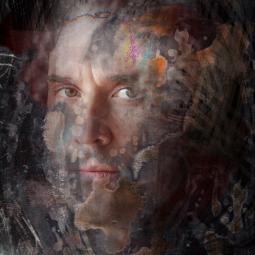Biography
KLOSKA (Ovidiu Closca) was born in Romania, Neamt district,in a small town in N-E of Romania at 27 of july 1977.
In 2000 he graduated TEHNICAL UNIVERTSITY "GH. ASACHI " Iasi, Faculty of Electronics and Telecommunication, Digital Radio communication section.
In 2012 he graduated with BA University "George Enescu" Iasi, Romania
In 2012 he graduated with MA University "George Enescu" Iasi, Romania
Member of Romanian Union of Professional Artists UAP
About Kloska Ovidiu
"Fall into Time... With the new creations of the painter Ovid Kloska, the ethic and aesthetic problem of the re-discussing The Intervalul witch separetes, but also is approaching the mundane world, sub-solar, by the celestial one, is returning with power in the actuality of a time whose spiritual landmarks seem to have been permanently forgotten by humanity. The Interval between the terrestrial and celestial world, understood not only as a vacuum, but as a place filled with angels and humans alike, is offering the chance of the absorption of all with the open spirit, in the redemptive light that systematically and gradually shaping around each angel "made" by the artist. Kloska's Angels - if we are allowed in this forcing in both the ideea and the expressing - in their oscillation between Absolute and Mental Misery, they are offering in susidary the alternative of the a redemption, a spiritual salvation, a deliverance from the iron ring of material existence expressed through the corporality where the spirit is constrained to exist a periode, whose essence can only just only one and expressed by the atributes specific to the intangible. It is known, the spirit can only be absolutely free ! The vector that demonstrates this fact is just the atypical angel from Kloska's creation, whereas, although apparently contaminated by the intrinsic suffering specific to the human kind, he manifests the liberty of the own self by the fantastic play of light developed in various forms, some more surprising than others. The angel, understud as the messanger, as the intermediary between this two worlds- althrough, the binary perceived in this way is reducing with high amount the spiritual essence of the Great Interval - propossing o diferent intra-existential variant, a being one, that brakes spaces considered immutable and fixed, developing in this way both paradigms that are imposibil to concept and perceived by the ordinary minds. We observ, by the way, how the artist is astonishing events suis-generis - corporal-humanlly of the angels, in this way redirecting the biblic elan, born after the gesture, according to which God created the human after His own face; to Kloska, the angels, as extensions of God, are created with the face and kind of the man, as it crushed in its own Sisyphean terrestrial misery , more than in the happiness of the transcendental origin. The corporality of the angels, the aparition of the hands in the grave oniric image, de-veiled by a world of a beggining of the increated Create, is shocking appears like an explosion, with feelings specific to human kind, marked by special portrets, some fallen into deep meditation, some exteriorizing experiences in the vicinity of wonder, or intimidation before the big Pass, or instant illuminations, cold detachment, eternal ends. Sensational Construct, the apparently body of the angel - angels - is captured by visible and invisible plane, intuit, but; we have to deal with secondary corporality much more inferred then rational, in the means of non-reproduction. It develops successfully like a feeling and has the power to mark, in our opinion, the beggining of a new road in contemporary art; adding the figure - the figures, respective the faces of the angels, that seem to merge into the dark - light background, continuing, in this way, idea of escaping from himself and, thereby, from the negative constraints of the material world . The duality presented by the body and the spirit, by the light and dark, is creating the deceptive impression of the idea once expressed by M. Foucault, that "ževerything looks like everything, any with any", but the artist knows how to avoid clichés, old cultural assumptions of the space where he makes his aesthetic moves, creating the sensation of certain easily, nowise of lightness, his images not giving us the impression that they are ready-made, resulting from some habits of thought or reflexes studied in the mirror. We are dealing with a braking of patterns of descartiene thinking, that once required a direct reasoning, without intermediaries, because the author proposes us a mediated thinking even by the angels that becamed, as Durand wrote: "ž symbols of the symbolic function itself "; instead of disappearing , the angels are re-appearing in force in a time that requires more than ever the presence of them as the singular support of our salvation as ourselves. The twistings of the soul are leisurely investigated, and the reactions developed through the recent creation are compressing the revealing groan of the invalid contemporary man, suggesting, in a way, an extraordinary thing: that even the spirits can be negotiated, at the end. But this is only a suggestion, that send us to the told of Rabelais, that even "ž the fishes are howling". The Transcendence is replaced with special energies that are downing into the body, and this fact and this is no more than the artist's eternal






